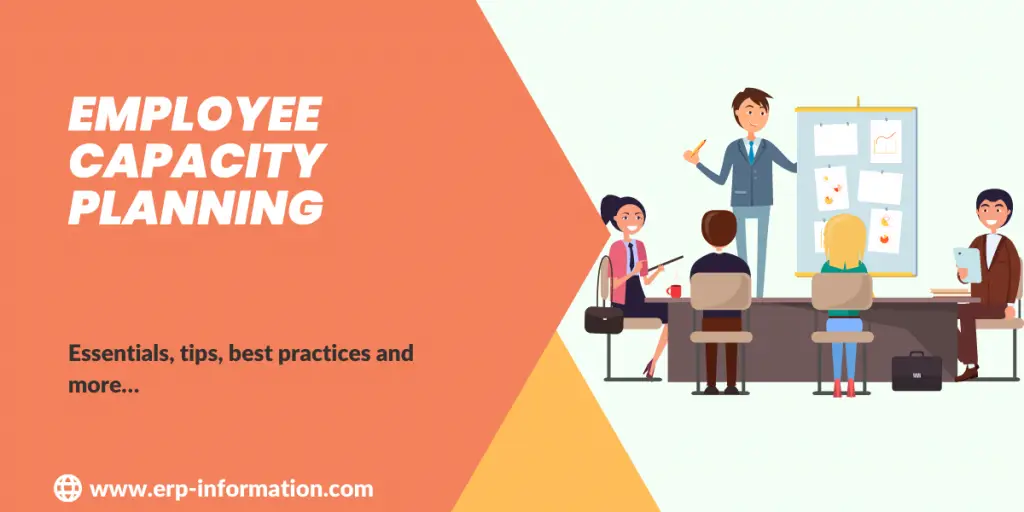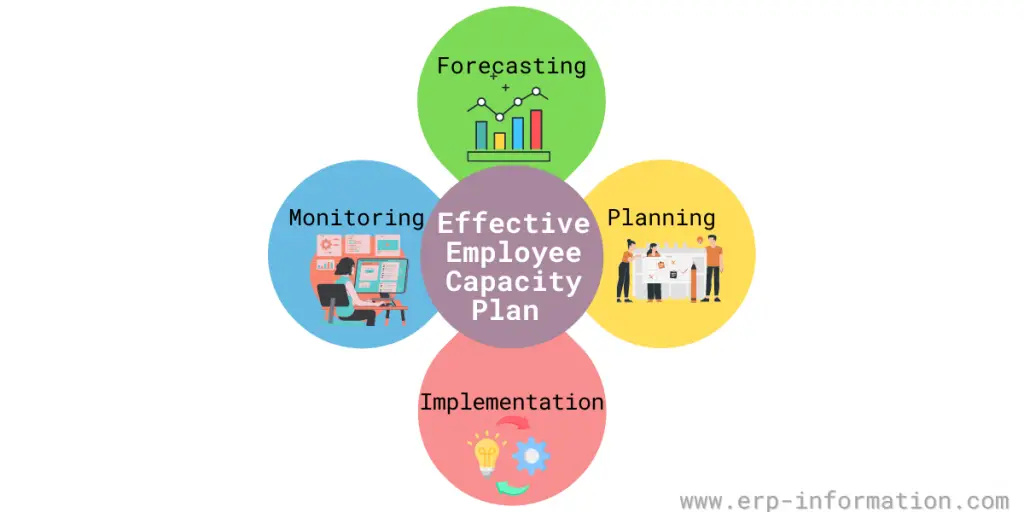Every business owner knows that having the correct number of employees is essential to success, but figuring out exactly how many employees you need can be difficult.
Hiring too many or too few employees can be costly and lead to missed opportunities or even disaster.
Employee Capacity Planning can help you avoid these problems by helping you plan for your future staffing needs. This article will discuss the essentials of employee capacity planning, offer tips on creating an effective plan, and provide some best practices to follow.
Evaluate your employee capacity planning using our Employee Utilization Rate Calculator
What is Employee Capacity Planning?
Employee capacity planning is the process of forecasting and planning the number of employees a company will need to meet its business objectives. Employee capacity planning aims to ensure that a company has the correct number of employees with the right skill sets to meet demand.
Why is Employee Capacity Planning Important?
Employee capacity planning is essential because it helps companies avoid over or understaffing, leading to decreased productivity and profitability. In addition, employee capacity planning ensures that a company has the right mix of employees with the right skillsets to meet demand.
How to create an effective employee Capacity Plan?
There are a few key elements that should be included in an effective employee capacity plan:
- Forecasting: The first step in creating an effective employee capacity plan is forecasting future demand. This can be done using various methods, such as trend analysis, market research, and customer surveys.
- Planning: Once you have a good idea of future demand, you can start planning for your future staffing needs. This includes determining how many employees you will need and what skill sets they will need to have.
- Implementation: The final step is to implement your plan. This includes recruiting and hiring employees and training them on the specific skill sets they will need.
- Monitoring: Once your plan is in place, it’s essential to monitor your employee capacity regularly and adjust as needed. This will help ensure you always have the right number of employees with the right skill sets to meet demand.
By following these steps, you can create an effective employee capacity plan that will help you avoid over or understaffing and ensure you have the right mix of employees with the right skill sets to meet demand.
Factors to be considered to create an employee capacity plan
When planning for employee capacity, it is essential to take into account a variety of factors.
- The most crucial factor to consider is the work that must be done.
- Another factor to consider is the number of currently available employees to do the work. You also need to consider the number of employees available in the future.
- It is also essential to consider the skills of the currently available employees. You need to make sure that you have enough employees with the right skills to do the work that needs to be done.
- Finally, it would be best to consider the cost of hiring new employees. You need to ensure that you are not spending more money than you need to on employee capacity.
Considering all these factors, you can create an effective employee capacity plan.
Best practices for employee capacity planning
It is essential to have a plan to ensure that your employees can handle the workload given to them. Employee capacity planning can help ensure that your team can meet the demands of the business. In addition, you need to follow a few best practices.
- Know your team’s strengths and weaknesses.
- Monitor your employee capacity regularly.
- Understand the business goals and objectives.
- Make sure your employees have the skillsets they need to meet demand.
- Be realistic about the workload that your team can handle.
- Use planning tools like Excel templates to help with the process.
- Keep communication open between managers and employees.
These tips can help you create an effective employee capacity planning strategy to benefit your team and the business.
Employee capacity calculations
When calculating employee capacity, there are a few key factors to consider:
- The number of hours an employee can work in a day
- The number of days an employee is available to work in a week
- The number of weeks an employee is available to work in a year
With these three factors in mind, you can calculate the number of hours an employee can work in a year, which can be used to plan for staffing needs.
There are a few different ways to calculate employee capacity. The most common way is to use the following formula:
The number of hours worked per week x number of weeks worked per year = the number of hours worked per year
For example, if an employee works 8 hours per day, 5 days per week, and 52 weeks per year, their capacity would be:
8 hours x 5 days x 52 weeks = 2,080 hours per year
Another way to calculate employee capacity is to use the following formula:
Number of hours worked per day x number of days worked per week x number of weeks worked per year = number of hours worked per year
For example, if an employee works 8 hours per day, 5 days per week, and 52 weeks per year, their capacity would be:
8 hours x 5 days x 52 weeks = 2,080 hours per year
The two formulas above are the most common ways to calculate employee capacity. However, other factors can be considered when calculating capacities, such as vacation time, sick days, and holidays.
When planning for staffing needs, it is important to consider the capacity of each employee. By taking into account the number of hours an employee can work in a day, the number of days they are available to work in a week, and the number of weeks they are available to work in a year, you can ensure that you have the adequate staffing for your business needs.
FAQs
What is employee capacity?
Employee capacity means the potential ability to perform work over a certain period. This potential can be measured in terms of time, skills, energy, or quality.
What factors impact employee capacity?
Many factors can impact employee capacity, such as:
The type of work they are doing, Their level of experience, Their physical and mental health, The amount of time they have available to work, and The resources and support they have available to them.
How do you measure employee capacity?
There are a few different ways to measure employee capacity. One standard method is to calculate the number of employees scheduled for a given shift or work period based on the time required for each employee to complete their tasks. You can also use historical data to estimate future needs or employ predictive modeling techniques to get a more accurate picture of future demand.
What are the benefits of employee capacity planning?
Employee capacity planning can help organizations optimize their staffing levels and ensure that they have the correct number of employees working at any given time. It can also help improve communication and collaboration between departments and make it easier to identify potential bottlenecks and areas of improvement.
Conclusion
Employers must plan for employee capacity to create and maintain a productive and efficient work environment. Doing so can ensure your employees work to their fullest potential and avoid unnecessary stress or burnout.
In this blog post, we’ve provided some essential tips for doing just that. We hope you find this information helpful and wish you the best of luck in your employee capacity planning endeavors!

